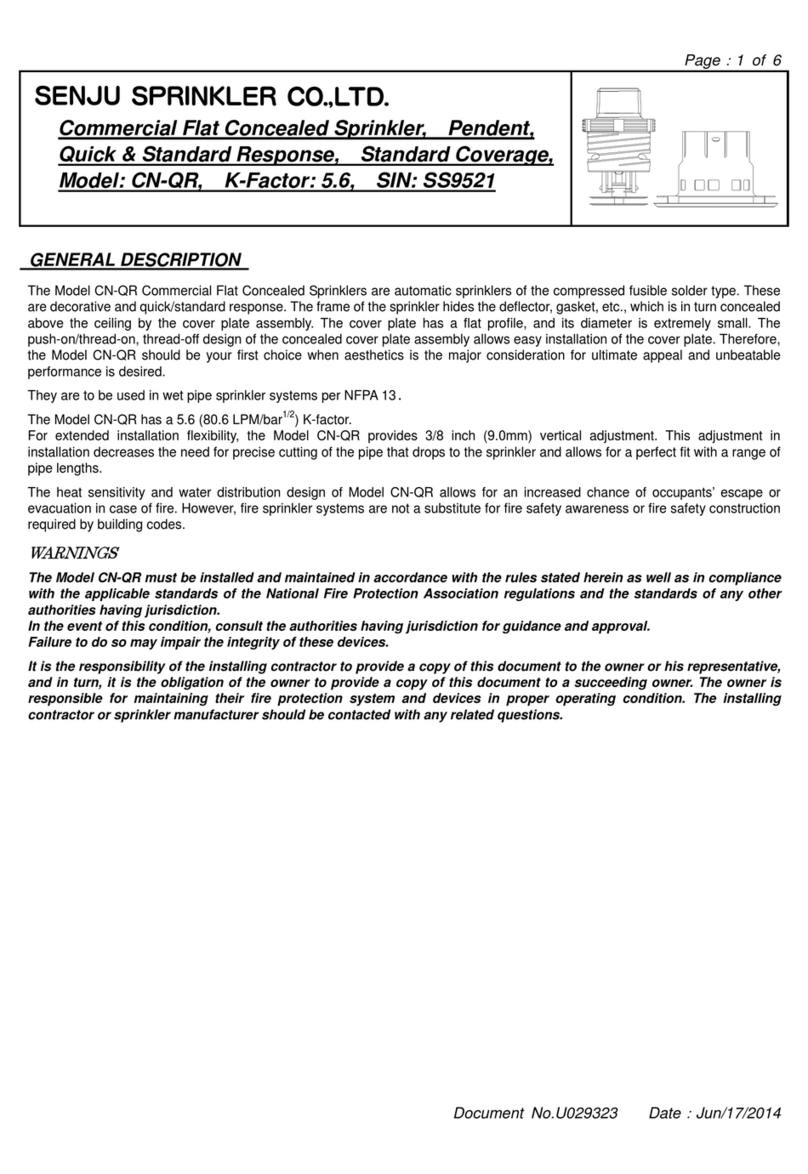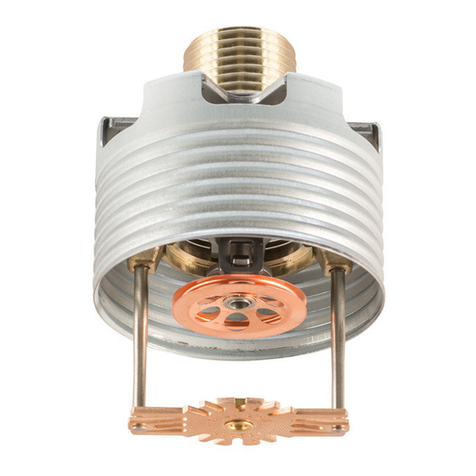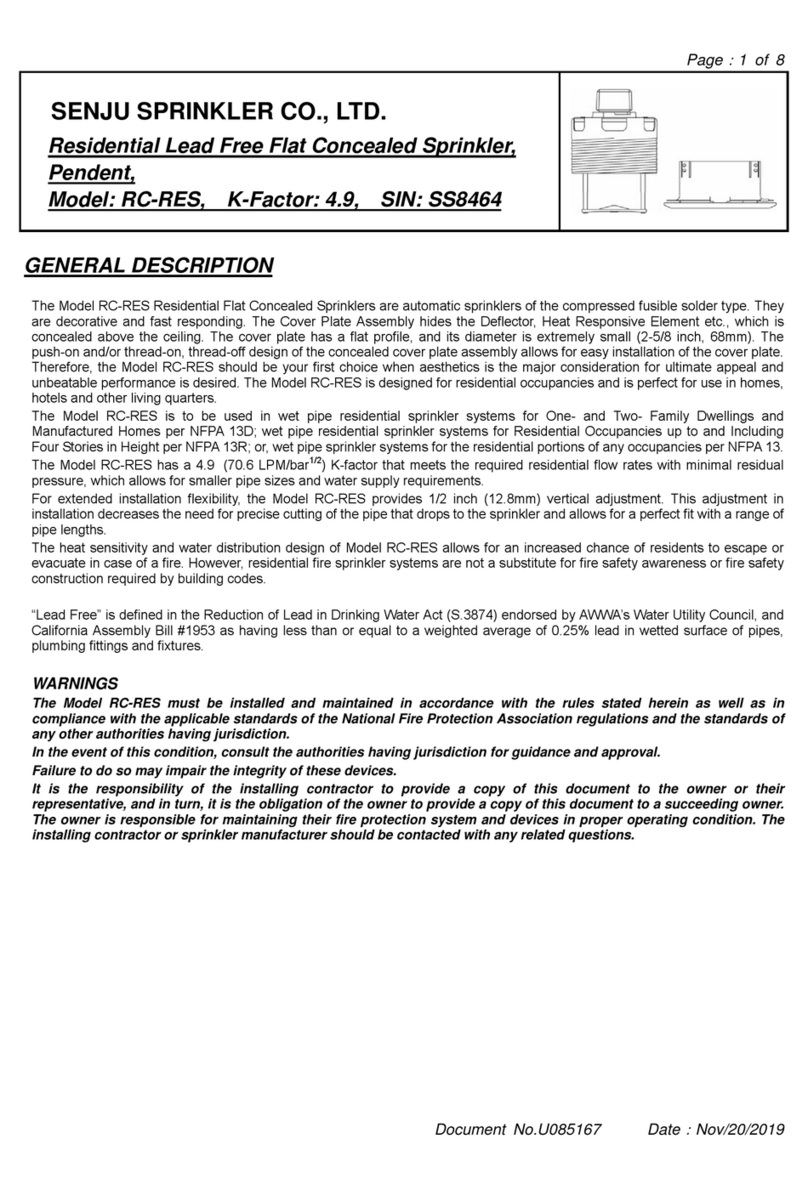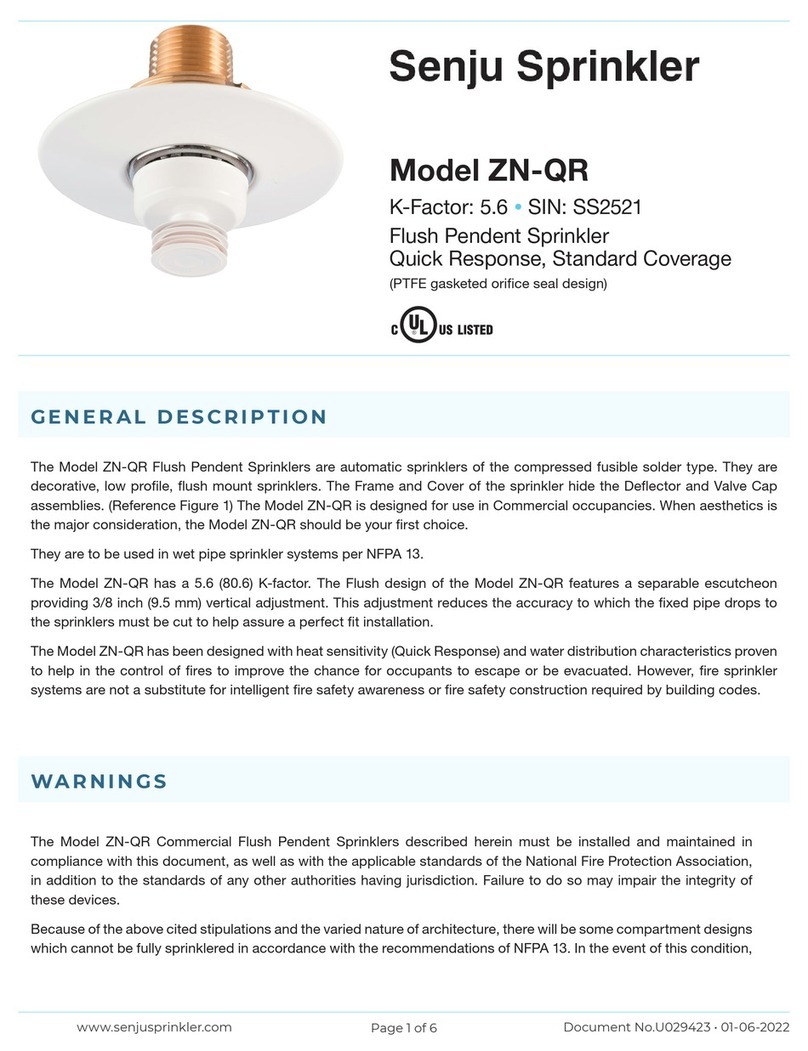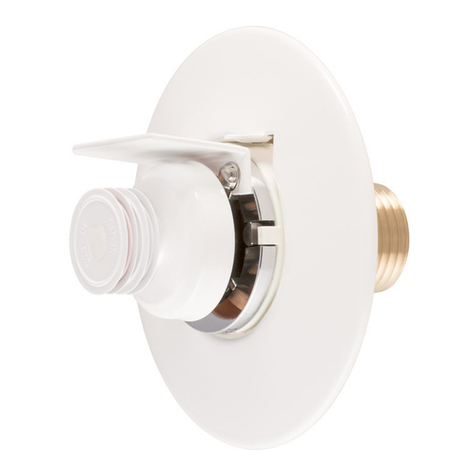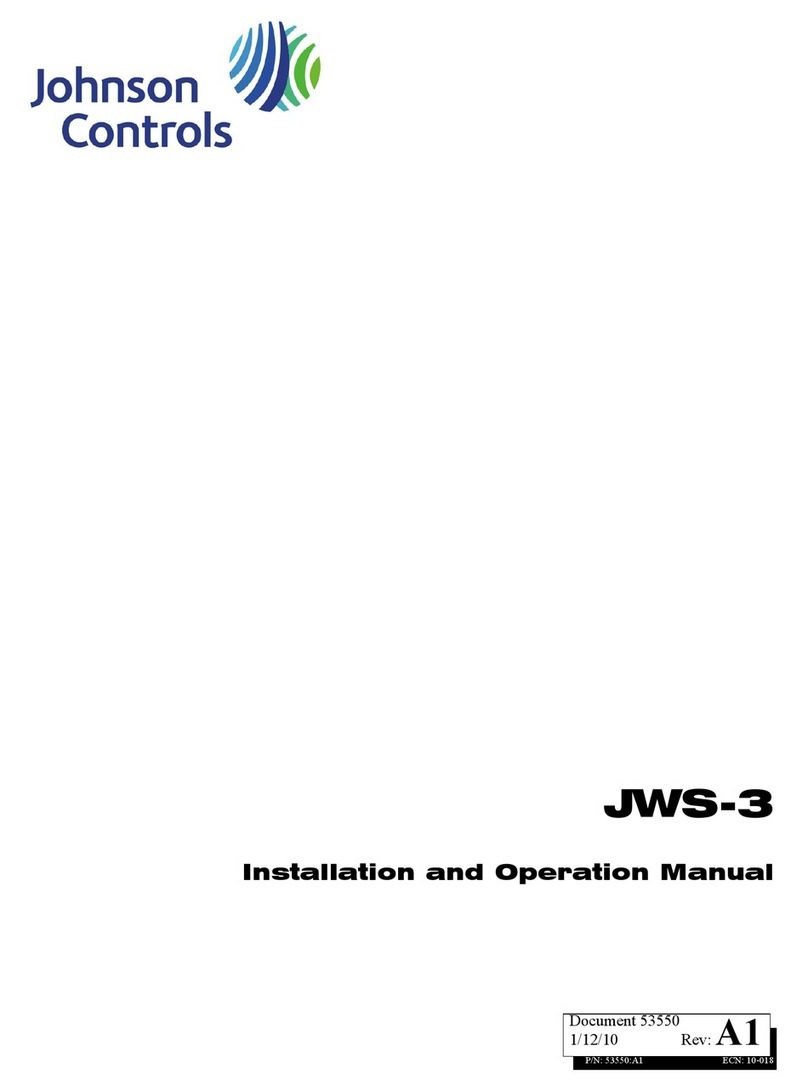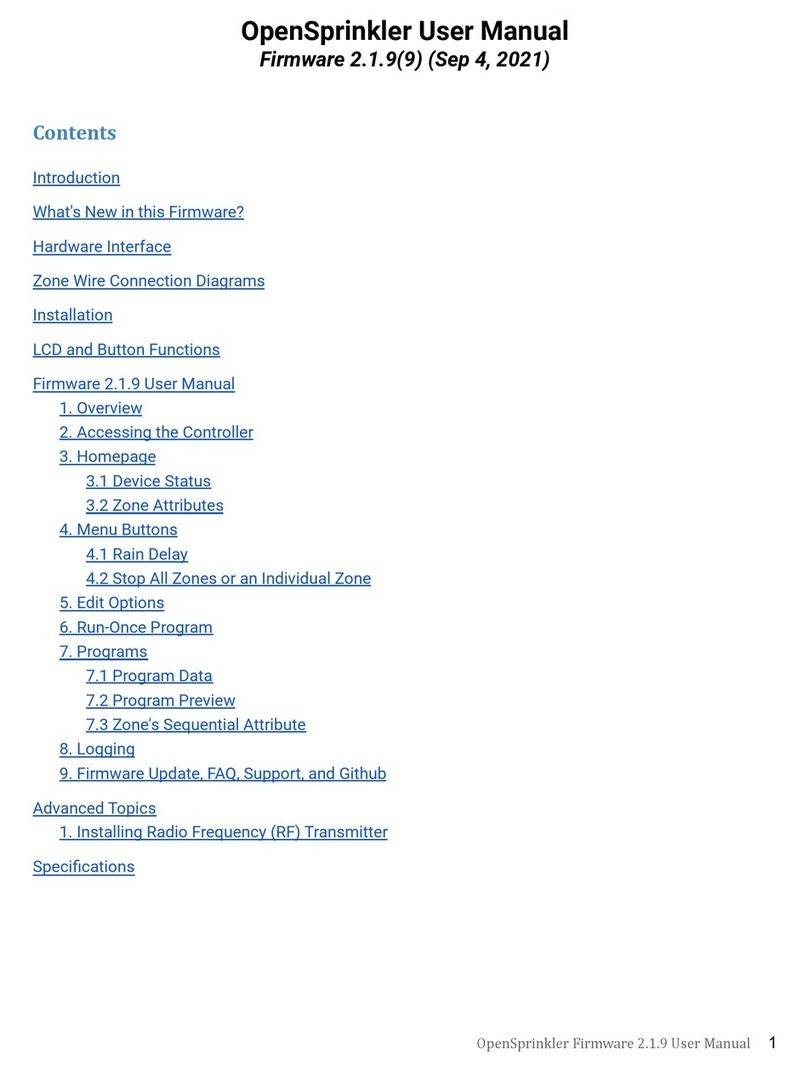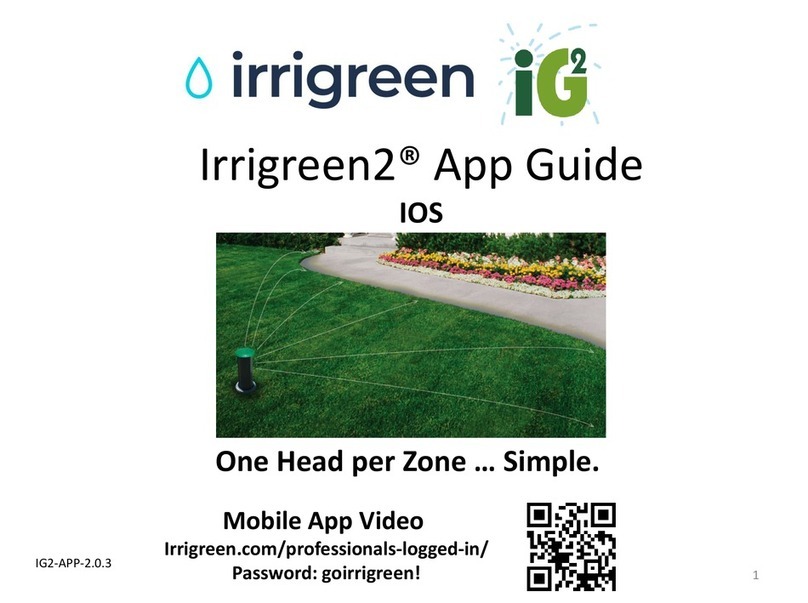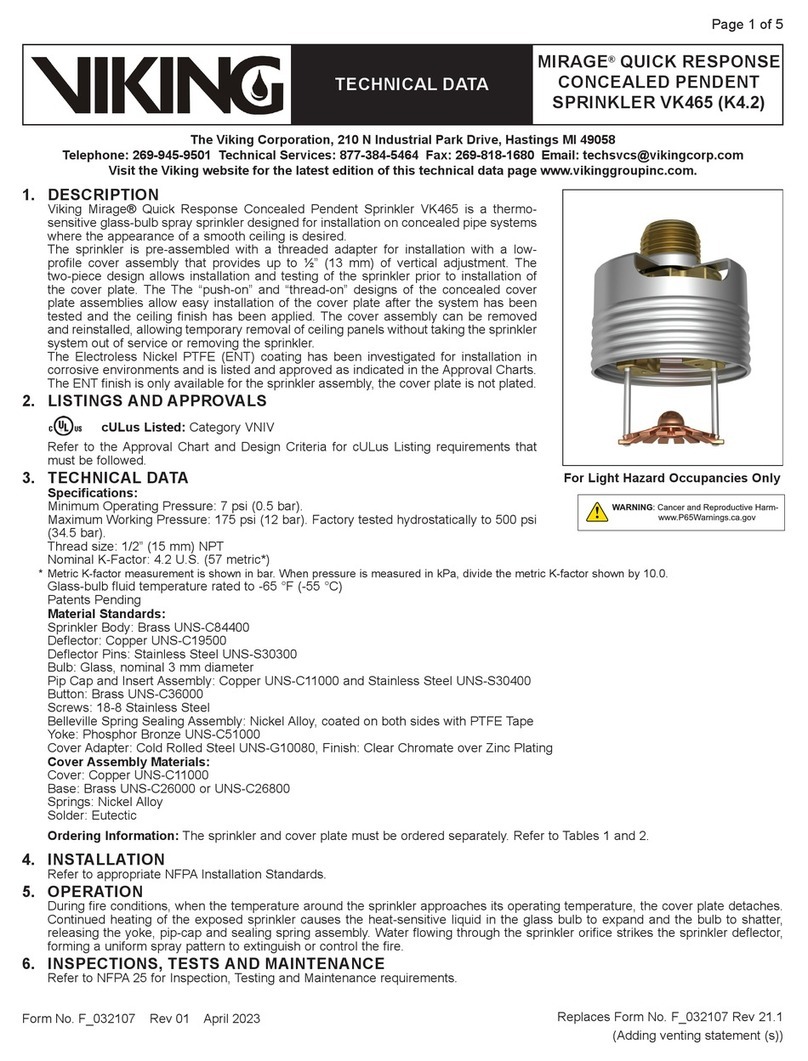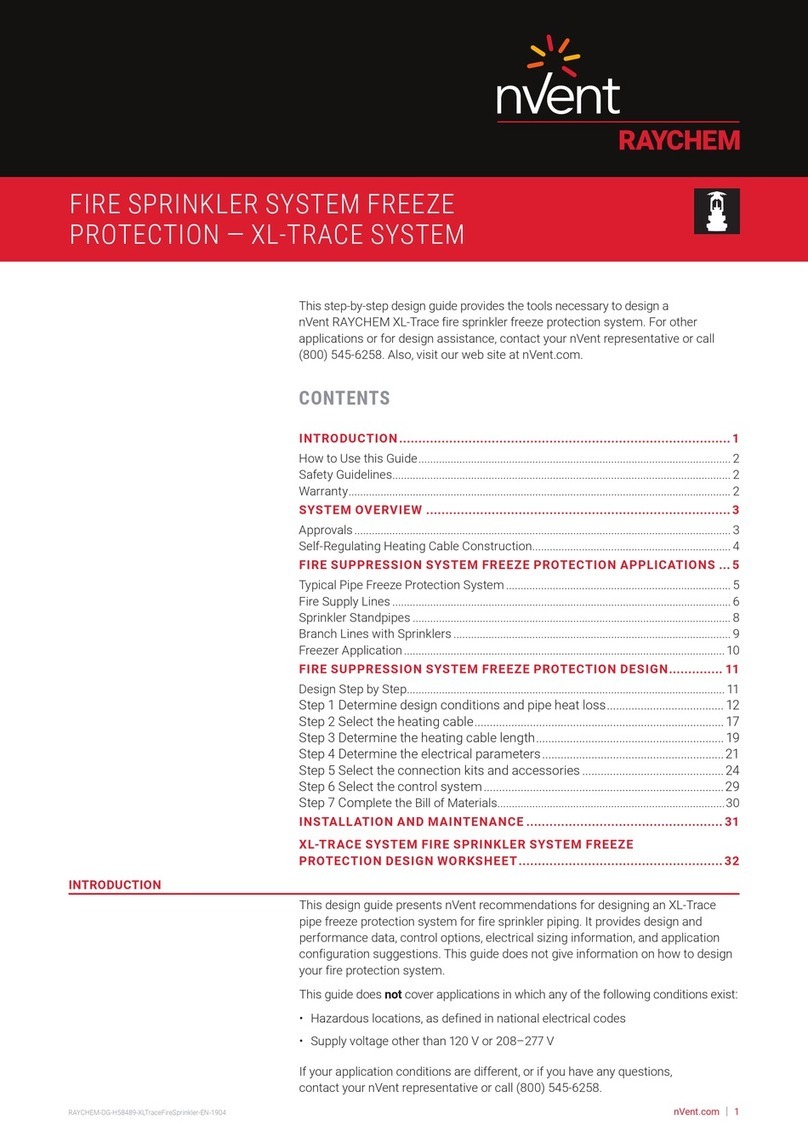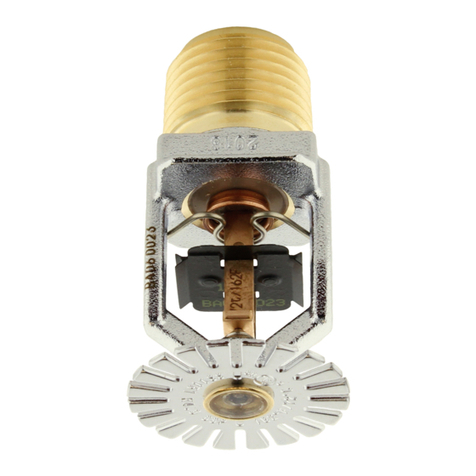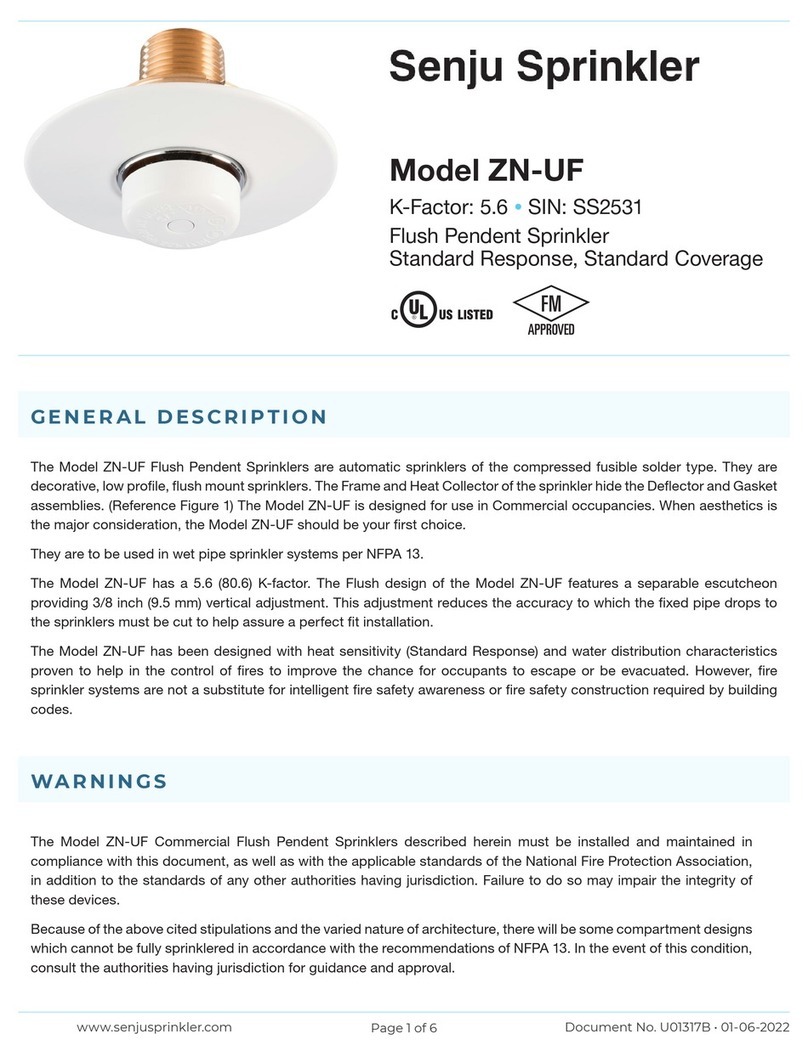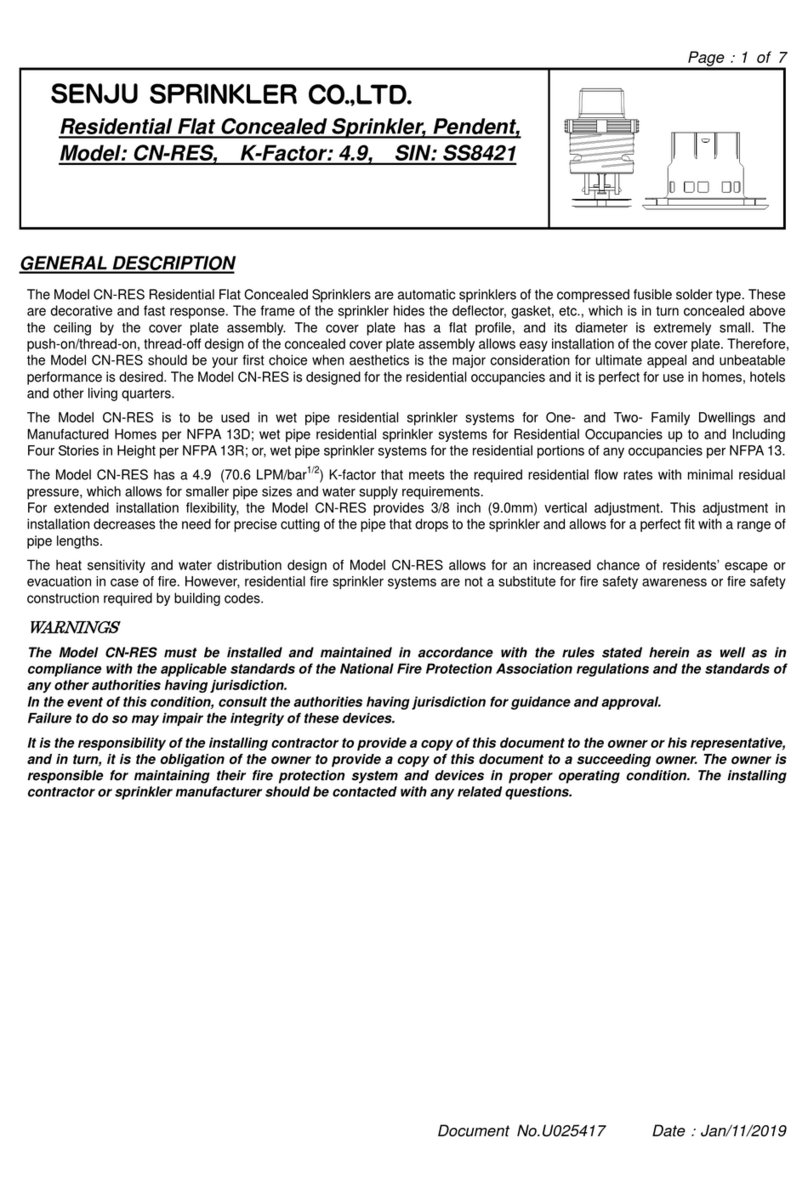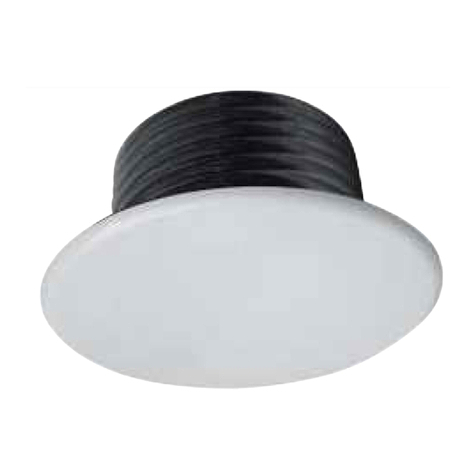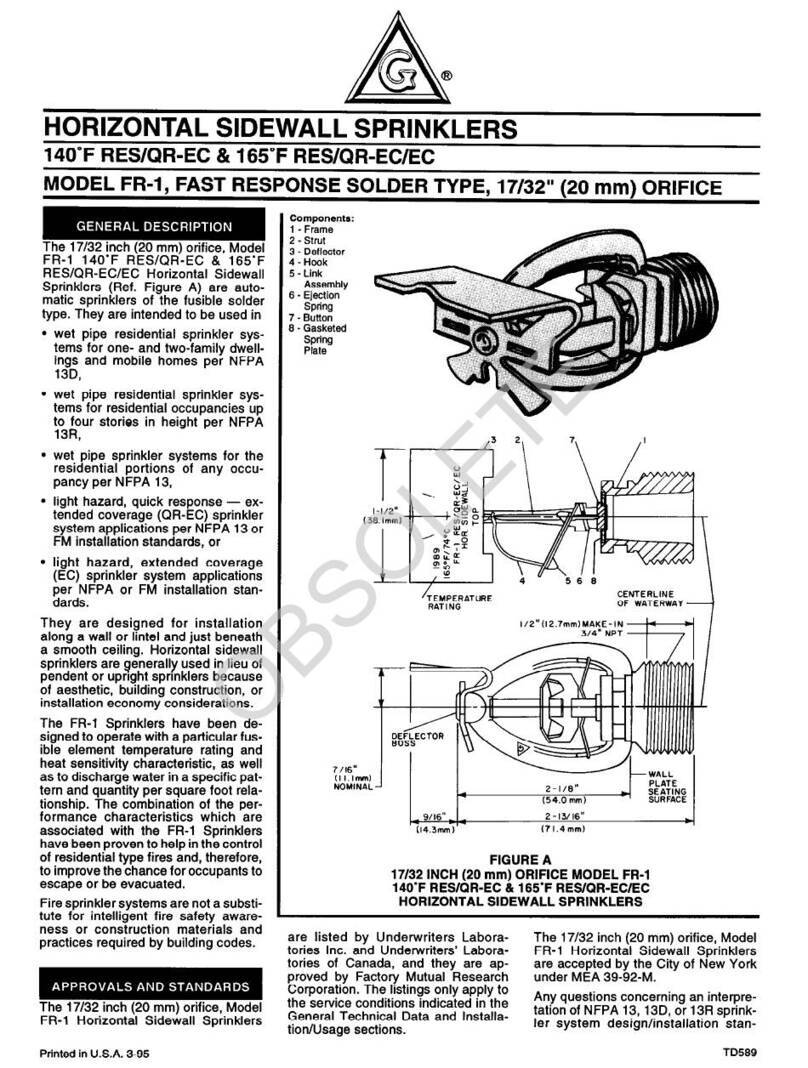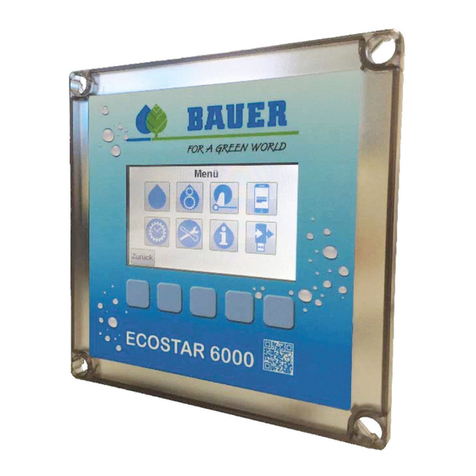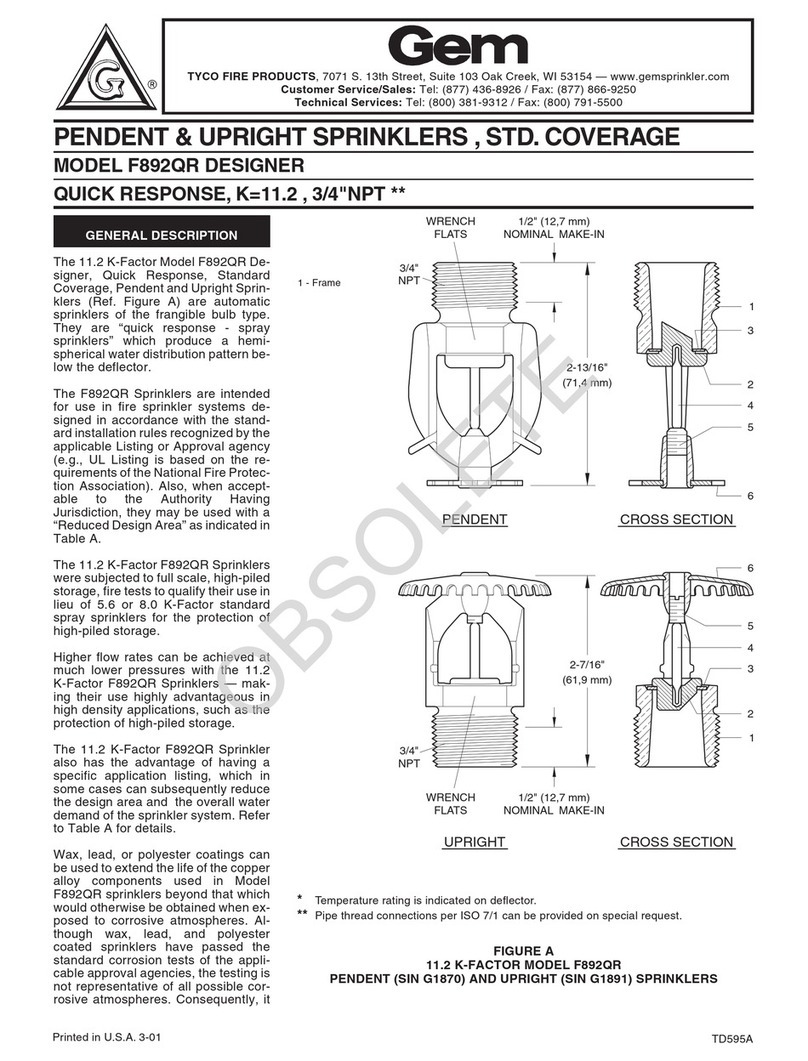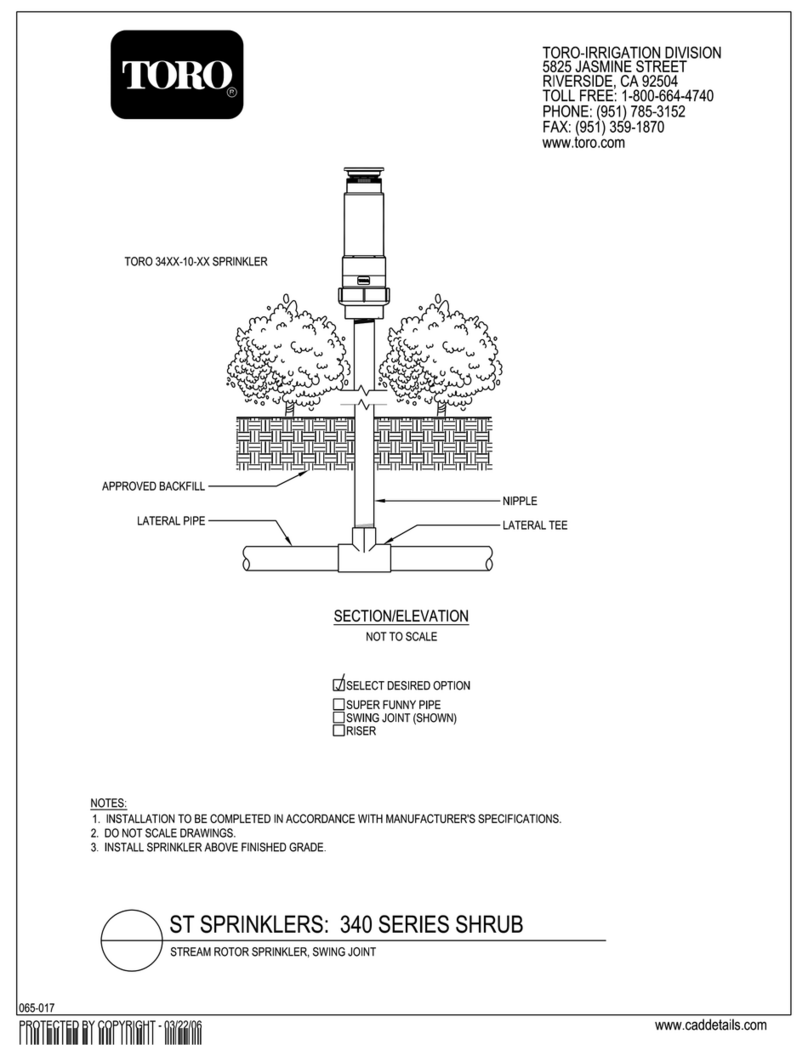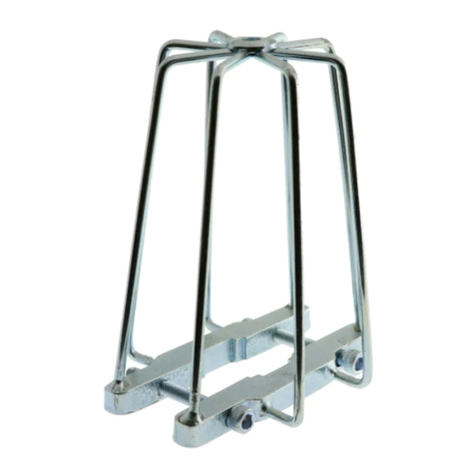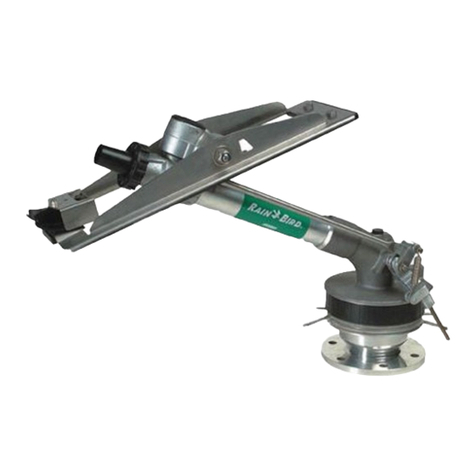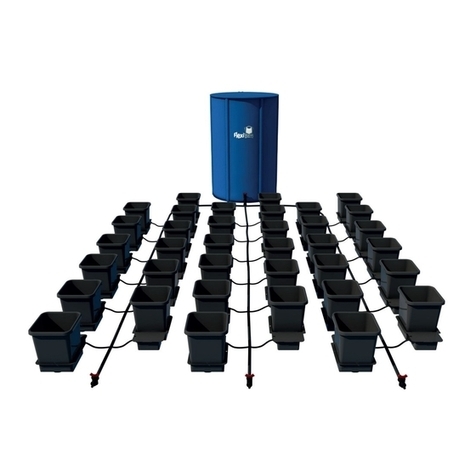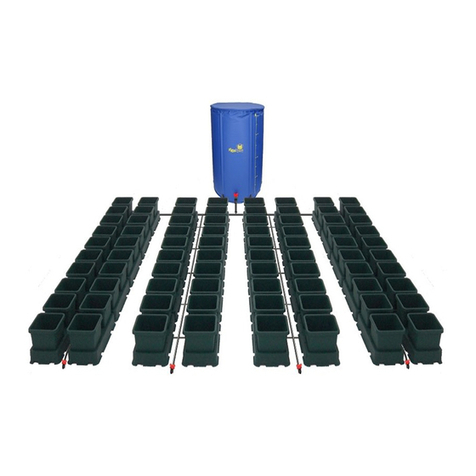
Page
:
7 of 8
Document No.U087473
Date
:
Nov/20/2019
CARE AND MAINTENANCE
The following instructions must be implemented for the maintenance and service of the Model RC-RES.
NOTES
Wet pipe sprinkler systems must be maintained at a minimum temperature of 40°F
/
4°C to prevent freezing and bursting
of the pipe and/or sprinklers.
Automatic sprinklers are not to be tested with a heat source. Operation of the heat responsive element can result.
Absence of a Cover Plate Assembly may delay the response time of the sprinkler in case of a fire.
Install the cover plate assembly properly, as shown in Figure 6. Improper installation of the cover plate assembly may
cause improper operation or non-operation.
If the ceiling is to be repainted after the installation of the Sprinkler, care must be exercised to ensure that the new paint
does not seal off any of the air gap.
Factory painted Cover Plates must not be repainted. They should be replaced, if necessary, by factory painted cover
plates. Non-factory applied paint may adversely delay or prevent sprinkler operation in case of a fire.
Do not pull the Cover Plate. Separation may result.
In preparation for maintenance of the fire protection system, permission to close the main control valve must be
obtained from the proper authorities, and all affected parties by this action, and must be informed before the
maintenance session can commence.
Do NOT enclose any sprinklers within drapes, curtains, or valances.
Do NOT hang anything from the sprinklers.
Do NOT clean the sprinklers with soap and/or water, detergents, ammonia, cleaning fluids, or other chemicals. Remove
dust, lint, cobwebs, cocoons, insects, and larvae by gently brushing with a feather duster or gently vacuuming with a
soft bristle (i.e., dusting) brush attachment.
Exercise suitable safety precautions in the use and storage of highly flammable materials. The rapid rate of fire
development and spread of these materials can reduce the ability of the sprinkler system to aid in the control of a fire
involving such hazards.
Leaking or corroded sprinklers must be replaced.
Automatic Sprinklers must be kept in a cool and dry place.
Automatic sprinklers must never be physically altered, such as painted, plated, or coated, once shipped from the
factory. If the sprinklers have been in any way modified, they must be replaced.
Great caution must be applied to prevent damage to the sprinklers at all stages - before, during, and after installation.
Damaged units because of dropping, hitting, over-tightening, or wrench slippage, must be replaced.
The Model RC-RES must only be replaced with pendent sprinklers which are listed for residential fire protection service
and which have the same nominal K-Factor, the same coverage area, and the same or lower flow ratings (as indicated
under TABLE A “Hydraulic Design Criteria”).
When remodeling, such as by adding false beams or light fixtures or changing the location of compartment walls, first
verify that the new construction will not violate the installation requirements of the applicable standards of NFPA. Alter
the new construction and/or the sprinkler system to suit the requirements of this document and the applicable NFPA
regulations.
The owner is responsible for the maintenance of the sprinkler system, including inspection and testing of its
compliance with this document, as well as the standards of the National Fire Protection Association (e.g., NFPA 25),
and the regulations of any other authorities having jurisdiction. The owner should direct any questions regarding the
above rules and regulations to the installing contractors or the sprinkler manufacturer. It is recommended that
automatic sprinkler systems be inspected, tested, and maintained by a qualified Inspection Service in accordance with
NFPA 25.
Limited Warranty
For details of warranty, refer to Sales Contract.









